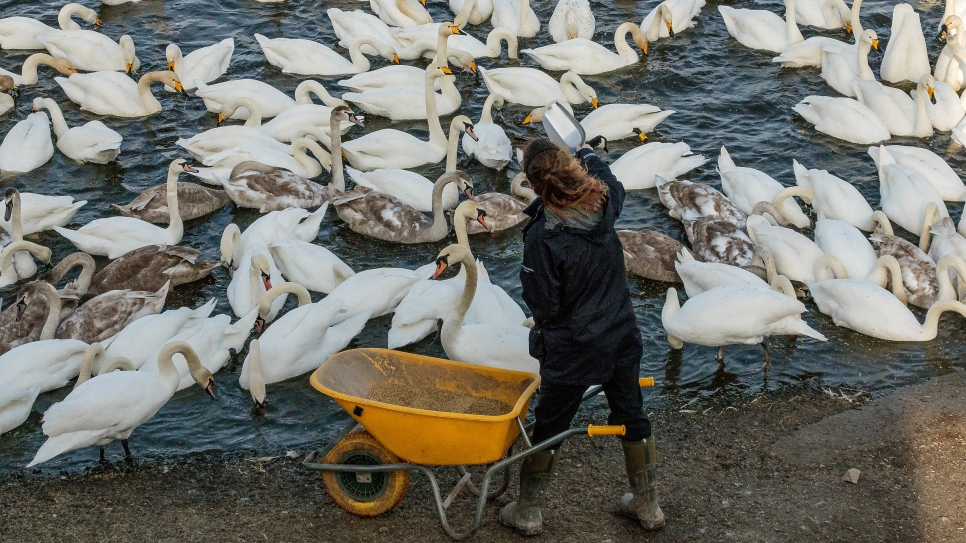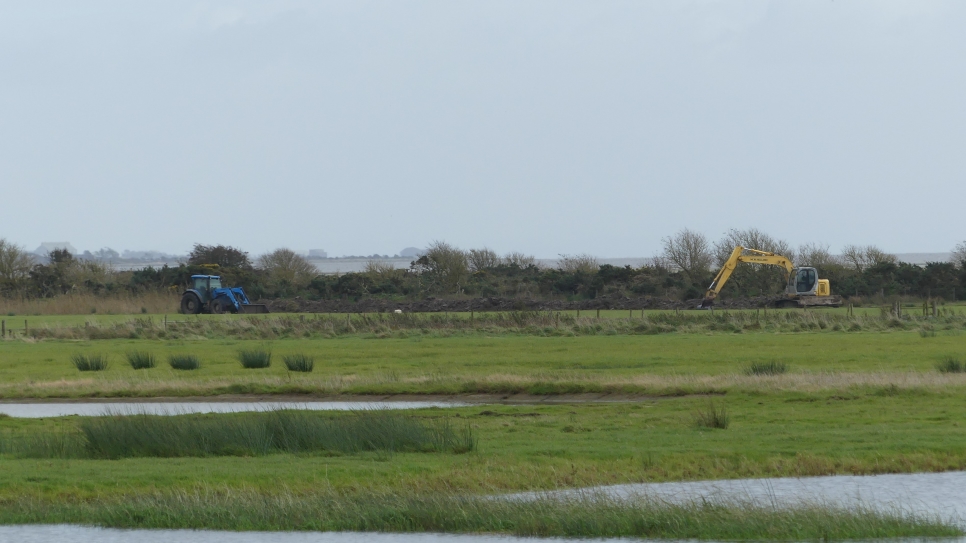A visit from the UK Ladies Scythe Champion!
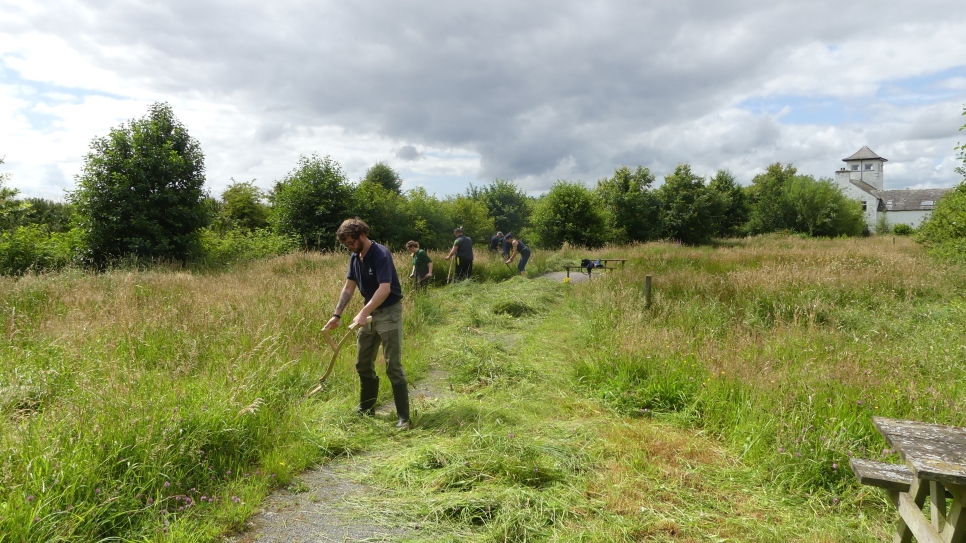
Recently we were delighted to welcome Andi Rickard from Somerset Scythe School for a scythe training day. This provided a great opportunity to get out with the reserve team and learn a new skill.
A scythe is an agricultural hand tool with a long handle and curved blade used to mow grass, and their use is making a comeback, especially considering their sustainability. They are efficient, don’t require fossil fuels, and leave no pollution.
Our day started with an introduction to the components of the scythe, before arranging the hand grips on the snath (the wooden shaft) to fit us each comfortably. Next, we attached the blades to the snath, learning how to do so safely before sharpening them. A stone is used to sharpen scythe blades, with short and overlapping strokes.
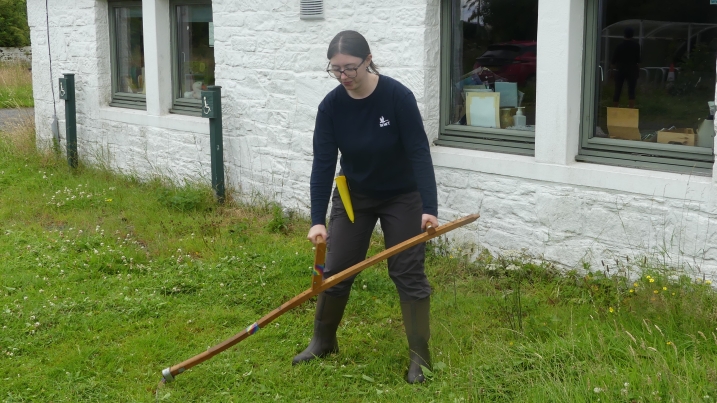 Reserve Placement Madisyn getting used to the scythe.
Reserve Placement Madisyn getting used to the scythe.
All prepared and carrying our sharpening stones in their holders half-filled with water (a challenge not to spill!) it was time to have our first go at mowing. We started small to get used to the motions, holding the back of the blade on the ground and moving it in a semi-circle in front of us, watching carefully how the blade moves. By lunchtime we had moved onto the paddocks and cleared a large proportion of the grass, all whilst applying our new skills and having fun.
After a well-earned lunch break, we learnt how to peen our blades. Peening is the periodical reshaping of the blade edge to ensure it can maintain a sharp cutting edge and it is essential for blade maintenance. Repeated honing of the blade in the field using the stone eventually wears the blade down into the thicker part of the metal, reducing its cutting efficiency. Using a peening jig, we cold hammered the edge of the blade to draw it out.
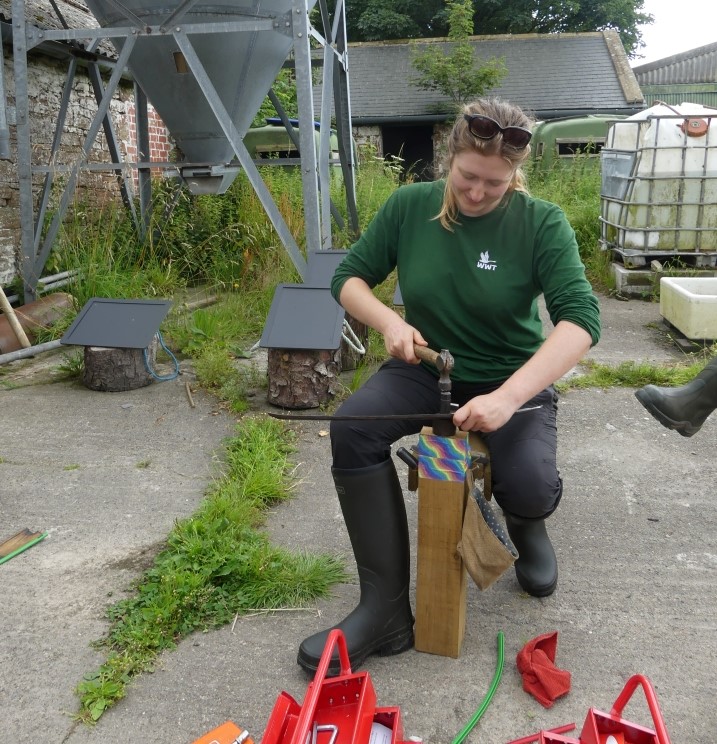 Reserve Warden Rebekah peening a blade.
Reserve Warden Rebekah peening a blade.
We mow the paddocks twice a year around February, before growing season, and at the end of summer when wildflowers have gone to seed to promote biodiversity. Mowing around February lowers rush density and allows wildflowers to have a chance before the growing season. By lowering the density and height of the rush we are allowing more grass through which increases wildflowers, for example yellow rattle, birdsfoot trefoil, marsh bedstraw, meadowsweet, and red clover. By removing the vegetation at the end of summer we are lowering the nutrients; wildflowers thrive in low nutrient soil.
Using scythes is more environmentally friendly than strimmers and has other benefits including allowing animals that are hiding in the grass to move away quicker, they are also easier to spot and avoid. Scything allows our reserve team to leave patches of wildflowers and work around the land with ease. It is better for visitors too, there is less noise pollution and disturbance to wildlife.
For more information visit the Somerset Scythe School website.
Words and pictures by Saoirse Murphy-Collot

